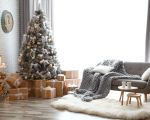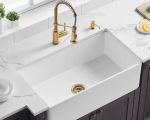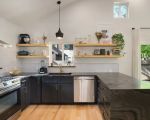Tips for Organizing Your Home’s Bookshelves
As someone who loves books and enjoys spending time in a cozy, well-organized home, I’ve spent countless hours figuring out how to organize my bookshelves. It might seem like a simple task, but with so many books, it can be overwhelming. Over the years, I’ve discovered several effective techniques that have transformed my bookshelves from chaotic to charming and functional. In this article, I’ll share some of the best tips for organizing your home’s bookshelves to help you not only tidy up but also create a space that brings you joy and functionality.
1. Start by Decluttering Your Collection
When I first decided to organize my bookshelves, the first thing I did was declutter. It’s easy to accumulate books over time, especially when you’re a book lover like me. However, not every book I owned was something I wanted to keep. I went through my collection and asked myself if I had read the book recently, whether it was still relevant to my interests, and if I would read it again in the future. This helped me narrow down my collection to only the books that truly brought value or joy to my life.
One method that worked well for me was sorting my books into three piles: keep, donate, and discard. The "keep" pile consisted of books I loved and wanted to cherish, while the "donate" pile included books I felt I could part with, knowing they could bring value to someone else. The "discard" pile contained books that were damaged or outdated, and it was liberating to let go of those.
2. Group Books by Genre, Author, or Theme
Once I had my books narrowed down, the next step was organizing them in a way that made sense for me. One option is to group your books by genre. For example, I have a separate section for fiction, another for non-fiction, and even one for my cooking books. This makes it easier to find a specific book when I’m in the mood for a particular genre or subject.
Another popular option is to organize by author. If you’re someone who enjoys collecting works from specific authors, having their books together can give your shelves a more cohesive look. I personally love organizing my books by author because it reminds me of my favorite literary voices. You can also organize by theme—such as travel, self-improvement, or history—if that’s more suited to how you like to read and discover books.
3. Use Bookshelves as Decor
One of the things I’ve learned over time is that bookshelves can be more than just functional; they can also be beautiful pieces of decor. If you have a collection of coffee table books or vintage editions, consider using them as decorative accents in your space. When organizing your bookshelves, try arranging your books not just by category but also in ways that create visual interest. Stacking books horizontally, for instance, can create a more dynamic look and give you space to place small decorative items like candles, vases, or plants.
Adding plants or small sculptures to your bookshelves can also add personality and warmth to the space. I like to place a small indoor plant on one of the shelves to create a natural contrast with the hardcovers and paperbacks. The greenery adds life and breaks up the lines of books, creating a welcoming, stylish look in the room.
4. Make Use of Vertical Space
One challenge I faced with my bookshelves was the limited amount of space. To solve this, I began thinking vertically. I added additional shelves or used taller bookcases that reached up to the ceiling. This allowed me to store more books without crowding the space and gave my bookshelves a more elegant, organized look. Vertical shelving is especially useful in small spaces, as it draws the eye upward and creates the illusion of more space.
If you’re dealing with a small space or limited shelving, you can also consider using floating shelves. These can be mounted higher on the wall, making use of otherwise unused space. Floating shelves create a minimalist look and can be used to display books alongside other decorative objects.
5. Keep Frequently Used Books Accessible
When organizing your bookshelves, I highly recommend considering accessibility. Place books that you read often, like cookbooks or reference materials, at eye level or on easily reachable shelves. I found that putting my favorite novels or study materials at the top or bottom shelves made them harder to access and led to me leaving them in places around the house.
Instead, I moved my go-to books to more accessible shelves. For instance, I store my current reading material on the middle shelves, so I don’t have to search for it every time I want to read. This makes life easier, and my bookshelves look more organized as a result.
6. Use Bookends to Keep Books in Place
Bookends are a small but effective solution to keep your books from toppling over. They’re especially useful if you have books of varying sizes. In my experience, using sturdy bookends on either side of a shelf of books has made my shelves look neat and orderly. There are so many stylish options for bookends, from vintage designs to modern ones made of metal or wood, so you can find something that complements your home’s decor.
What’s great about bookends is that they also allow you to have more flexibility in how you arrange your books. You can mix and match vertically and horizontally stacked books, while keeping them neat and in place with bookends. It’s a simple way to give your bookshelves both style and function.
Conclusion
Organizing your home’s bookshelves is a rewarding project that not only creates a tidier living space but also enhances the aesthetic appeal of your home. With these simple yet effective tips—such as decluttering, grouping books by genre or theme, and using your bookshelves as decor—you can create a personalized bookshelf that is both functional and beautiful. Whether you’re looking to transform a small space or organize a sprawling collection, these strategies will help you make the most of your bookshelves. Take the time to curate your collection, and you’ll find that the process not only refreshes your space but also adds a sense of pride to your home library.








